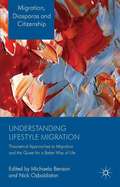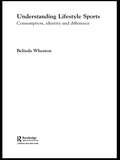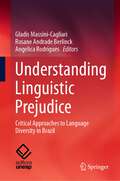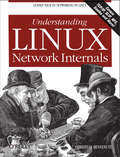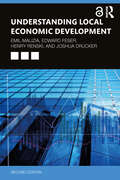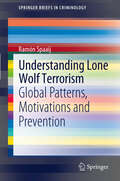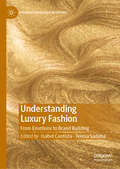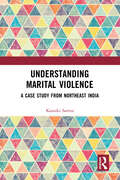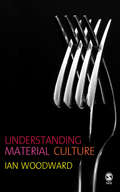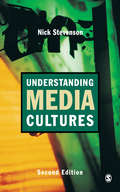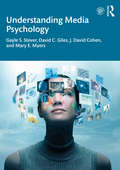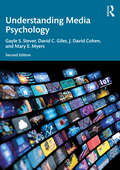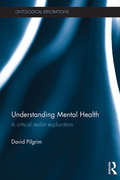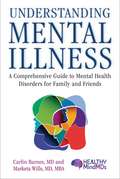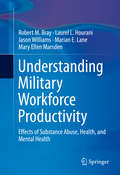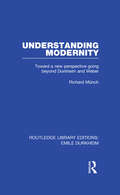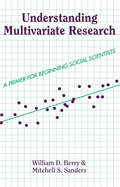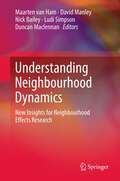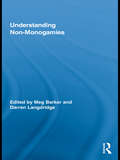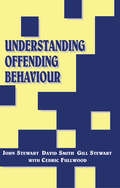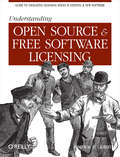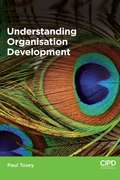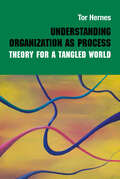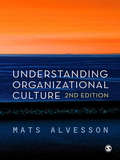- Table View
- List View
Understanding Lifestyle Migration
by Nick Osbaldiston Michaela BensonThis book draws on social theories to understand lifestyle migration as a social phenomenon. The chapters engage theoretically with themes and debates relevant to contemporary social science such as place and space, social stratification and power relations, production and consumption, individualism, dwelling and imagination.
Understanding Lifestyle Sport: Consumption, Identity and Difference (Routledge Critical Studies in Sport)
by Belinda WheatonThe past decade has seen a tremendous growth in the popularity of activities like skateboarding and snowboarding; sports that have been labelled as 'extreme' or 'lifestyle' and which embody 'alternative' sporting values such as anti-competitiveness, anti-regulation, high risk and personal freedom. The popularity of these activities goes beyond the teenage male youth that the media typify as their main consumers. This book examines the popularity, significance and meaning of lifestyle sport, exploring the sociological significance of these activities, particularly as related to their consumption, and the expression of politics of identity and difference. Including much unique ethnographic research work with skaters, surfers, windsurfers, climbers, adventure racers, and ultimate frisbee players., the central themes explored in The Cultural Politics of Lifestyle Sports include: How might we describe lifestyle sports? What influence do commercial forces have on lifestyle sports? Do lifestyle sports challenge the hegemonic masculinities inherent in a traditional sport environment? This book is a compelling exploration of sport as a way of life, and is a vital resource for any lecturer or student interested in Sociology and Cultural Studies in a Sports context.
Understanding Linguistic Prejudice: Critical Approaches to Language Diversity in Brazil
by Gladis Massini-Cagliari Rosane Andrade Berlinck Angelica RodriguesThis book discusses linguistic diversity, linguistic prejudice, and language variation and change from a Global South perspective by analyzing Brazilian Portuguese, Brazilian Sign Language (LIBRAS) and indigenous languages spoken in Brazil. It brings together studies and reflections on linguistic prejudice and social discrimination based on data and examples from Brazil and aims to bridge the gap between academic findings and popular notions related to linguistic diversity to promote language diversity and fight linguistic intolerance. Chapters in this volume present contributions to understand the origins and motivations of linguistic prejudice and foster awareness of entrenched opinions regarding linguistic diversity. The first part of the book brings together chapters analyzing basic sociolinguistic questions concerning linguistic prejudice based on theoretical discussions and qualitative research. The second part is composed of chapters that analyze linguistic prejudice in Brazil in major communities that speak Brazilian Portuguese varieties and minor communities that speak native and sign languages. Understanding Linguistic Prejudice: Critical Approaches to Language Diversity in Brazil will be a valuable resource for researchers in sociolinguistics interested in language diversity, language justice and language policy. It will also be of interest to sociologists, anthropologists and other social scientist interested in the relationship between language, diversity, equity and inclusion.
Understanding Linux Network Internals: Guided Tour to Networking on Linux
by Christian BenvenutiIf you've ever wondered how Linux carries out the complicated tasks assigned to it by the IP protocols -- or if you just want to learn about modern networking through real-life examples -- Understanding Linux Network Internals is for you.Like the popular O'Reilly book, Understanding the Linux Kernel, this book clearly explains the underlying concepts and teaches you how to follow the actual C code that implements it. Although some background in the TCP/IP protocols is helpful, you can learn a great deal from this text about the protocols themselves and their uses. And if you already have a base knowledge of C, you can use the book's code walkthroughs to figure out exactly what this sophisticated part of the Linux kernel is doing.Part of the difficulty in understanding networks -- and implementing them -- is that the tasks are broken up and performed at many different times by different pieces of code. One of the strengths of this book is to integrate the pieces and reveal the relationships between far-flung functions and data structures. Understanding Linux Network Internals is both a big-picture discussion and a no-nonsense guide to the details of Linux networking. Topics include:Key problems with networkingNetwork interface card (NIC) device driversSystem initializationLayer 2 (link-layer) tasks and implementationLayer 3 (IPv4) tasks and implementationNeighbor infrastructure and protocols (ARP)BridgingRoutingICMPAuthor Christian Benvenuti, an operating system designer specializing in networking, explains much more than how Linux code works. He shows the purposes of major networking features and the trade-offs involved in choosing one solution over another. A large number of flowcharts and other diagrams enhance the book's understandability.
Understanding Local Economic Development: Second Edition
by Emil Malizia Henry Renski Edward J. Feser Joshua DruckerThis book offers insights into the process and the practice of local economic development. Bridging the gap between theory and practice it demonstrates the relevance of theory to inform local strategic planning in the context of widespread disparities in regional economic performance.The book summarizes the core theories of economic development, applies each of these to professional practice, and provides detailed commentary on them. This updated second edition includes more recent contributions - regional innovation, agglomeration and dynamic theories – and presents the major ideas that inform economic development strategic planning, particularly in the United States and Canada. The text offers theoretical insights that help explain why some regions thrive while others languish and why metropolitan economies often rise and fall over time. Without theory, economic developers can only do what is politically feasible. This text, however, provides them with a logical tool for thinking about development and establishing an independent basis from which to build the local consensus needed for evidence-based action undertaken in the public interest.Offering valuable perspectives on both the process and the practice of local and regional economic development, this book will be useful for both current and future economic developers to think more profoundly and confidently about their local economy.The Open Access version of this book, available at http://www.taylorfrancis.com, has been made available under a Creative Commons Attribution-Non Commercial-No Derivatives (CC-BY-NC-ND) 4.0 license.
Understanding Lone Wolf Terrorism
by Ramon SpaaijWhat drives the lone wolf terrorist to commit mass violence? What are their ideologies and motivations? How do they plan and carry out their attacks, and who do they target? How can lone wolf terrorism be effectively countered? One of the first in-depth analyses of lone wolf terrorism, this publication sets out to answer these questions. Drawing on extensive international data and qualitative case studies, it examines the global patterns in and key features of lone wolf terrorism over the past four decades. This engaging text will be essential reading for students and researchers on terrorism and violent conflict and offers unique and invaluable insights to those working to prevent or minimize the effects of terrorism and political violence.
Understanding Luxury Fashion: From Emotions to Brand Building (Palgrave Advances in Luxury)
by Teresa Sádaba Isabel CantistaOffering an original contribution to the field of luxury and fashion studies, this edited collection takes a philosophical perspective, addressing the idea that humans need luxury. From this framework it delves deep into two particular dimensions of luxury, emotions and society, and concludes with cases of brand building in order to illustrate the two dimensions at work. Comparative analysis between countries is brought together with an emphasis on China. Chapters address the ongoing growth in the market, as well as the significant changes in the sector brought about by fast international expansion and an increased focus on ethical supply and sustainability, making the book an insightful read for scholars of fashion business, luxury and branding.
Understanding Marital Violence: A Case Study from Northeast India
by Kausiki SarmaThis book examines the roles and interconnections between structural factors and individual agency in marital violence, focusing on women in heterosexual marital relationships. With the overall aim of improving recognition and strengthening responses to marital violence, it underlines what occurs as marital violence and why it is possibly occurring in the manner it does, while simultaneously demonstrating how it is dealt with and resisted.Based upon in-depth qualitative data focussing upon the experiences of women facing marital violence and key informants from Assam in Northeast India, this book sheds light upon four key areas. To begin with, what is named or recognised (and not recognised) as marital violence is assessed and a typology (and associated denials) informed by the capabilities approach is developed. Further, the re-victimisation that happens through and within both civil and criminal justice is explored. In addition to this, the existing structural context highlighting changes that occur at a broader economic, political, and social level, contextualising a society that is in transition, has been emphasised. To conclude, conditioned by distinct material-cultural constraints-enablers and acknowledging the role played by emotions, a temporal agential trajectory in response to marital violence is mapped, specifically through the concepts of Habitus and Reflexivity. In short, this book attempts to decolonise certain aspects of academic knowledge around marital violence by asserting the need to consider distinct natures and forms of violence and violations that occur within marriages and the acknowledgement of a spectrum of actions in the agential trajectory so that victims-survivors are not solely assessed by their decisions to stay or to leave an abusive marriage.It will be of interest to scholars, students, professionals, and policymakers working within social work, social policy, gender studies, and violence prevention.
Understanding Material Culture
by Dr Ian Woodward"In his interdisciplinary review of material culture, Ian Woodward goes beyond synthesis to offer a theoretically innovative reconstruction of the field. It is filled with gems of conceptual insight and empirical discovery. A wonderful book." - Jeffrey C. Alexander, Yale University "A well-grounded and accessible survey of the burgeoning field of material culture studies for students in sociology and consumption studies. While situating the field within the history of intellectual thought in the broader social sciences, it offers detailed and accessible case studies. These are supplemented by very useful directions for further in-depth reading, making it an excellent undergraduate course companion." - Victor Buchli, University College London Why are i-pods and mobile phones fashion accessories? Why do people spend thousands remodelling their perfectly functional kitchen? Why do people crave shoes or handbags? Is our desire for objects unhealthy, or irrational? Objects have an inescapable hold over us, not just in consumer culture but increasingly in the disciplines that study social relations too. This book offers a systematic overview of the diverse ways of studying the material as culture. Surveying the field of material culture studies through an examination and synthesis of classical and contemporary scholarship on objects, commodities, consumption, and symbolization, this book: introduces the key concepts and approaches in the study of objects and their meanings presents the full sweep of core theory - from Marxist and critical approaches to structuralism and semiotics shows how and why people use objects to perform identity, achieve social status, and narrativize life experiences analyzes everyday domains in which objects are important shows why studying material culture is necessary for understanding the social. This book will be essential reading for students and researchers in sociology, anthropology, cultural studies, consumer behaviour studies, design and fashion studies.
Understanding Media Cultures: Social Theory and Mass Communication
by Nicholas StevensonPraise for the First Edition: `I can't think of a book in media studies that handles so well the diversity of perspectives and issues that Stevenson addresses. Whether reconstructing Marxism or deconstructing postmodernism, tackling the pleasures of soap opera or the repetitive structures of daily news presentation, Stevenson is always clear and insightful' - Sociology The Second Edition of this book provides a comprehensive overview of the ways in which social theory has attempted to theorize the importance of the media in contemporary society. Now fully revised to take account of the recent theoretical developments associated with `new media' and `information society', as well as the audience and the public sphere, Understanding Media Cultures: - Critically examines the key social theories of mass communication - Highlights the work of individual theorists including Fiske, Williams, Hall, Habermas, Jameson, McLuhan and Baudrillard. - Covers the important traditions of media analysis from feminism, cultural studies and audience research. - Now includes a discussion of recent perspectives developed by Castells, Haraway, Virilio and Schiller. - Provides a glossary of key terms in media and social theory. Retaining all the strengths of the previous edition, Understanding Media Cultures offers a comprehensive and up-to-date overview of the field. It will be essential reading for students of social theory, media and cultural studies.
Understanding Media Psychology
by David C. Giles Gayle S. Stever J. David Cohen Mary E. MyersUnderstanding Media Psychology is the perfect introductory textbook to the growing field of media psychology and its importance in society, summarizing key concepts and theories to provide an overview of topics in the field. Media is present in almost every area of life today, and is an area of study that will only increase in importance as the world becomes ever more interconnected. Written by a team of expert authors, this book will help readers to understand the structures, influences, and theories around media psychology. Covering core areas such as positive media psychology, the effects of gaming, violence, advertising, and pornography, the authors critically engage with contemporary discussions around propaganda, fake news, deepfakes, and the ways media have informed the COVID-19 pandemic. Particular care is also given to addressing the interaction between issues of social justice and the media, as well as the effects media has on both the members of marginalized groups and the way those groups are perceived. A final chapter addresses the nature of the field moving forward, and how it will continue to interact with closely related areas of study. Containing a range of pedagogical features throughout to aid teaching and student learning, including vocabulary and key terms, discussion questions, and boxed examples, this is an essential resource for media psychology courses at the undergraduate and introductory master’s level globally.
Understanding Media Psychology
by David C. Giles Gayle S. Stever J. David Cohen Mary E. MyersUnderstanding Media Psychology is an authoritative introductory textbook on the growing field of media psychology. Providing an overview of topics in the field, it summarizes key concepts and theories and considers the importance of media psychology in today’s society.The second edition of this bestselling textbook has been fully updated to reflect the changing landscape of media psychology. The new edition features a brand-new chapter on news and political media, as well as increased focus on AI and new forms of social media. It covers core areas such as positive media psychology, audience research, and the effect of gaming, violence, advertising and pornography, critically engaging with contemporary discussions around propaganda, fake news, deepfakes, and how media and health psychology interacted during the COVID-19 pandemic and beyond. Written by a team of expert authors, this book will help readers understand the structures, influences, and theories around media psychology. Particular care is also given to addressing the interaction between issues of social justice and the media, as well as the effects media has on both the members of marginalized groups and how those groups are perceived. A student website and instructor resources provide further ways to engage with the content and support teaching and learning.Containing a range of pedagogical features throughout to aid teaching and student learning, including vocabulary and key terms, discussion questions, and boxed examples, this is an essential resource for media psychology courses at the undergraduate and introductory master’s levels globally.
Understanding Mental Health: A critical realist exploration
by David PilgrimDavid Pilgrim PhD is Professor of Health & Social Policy in the Department of Sociology, Social Policy and Criminology at the University of Liverpool.
Understanding Mental Illness: A Comprehensive Guide to Mental Health Disorders for Family and Friends
by Carlin Barnes Marketa WillsGet the straight facts about mental illness from two Harvard trained psychiatrists. More than 40 million people in the US suffer from mental health problems—yet less than half receive adequate care and treatment. Even in the 21st century with the most advanced medical care in the world, social stigma still surrounds psychiatric problems, and this, combined with a lack of understanding, perpetuates a national mental health crisis affecting those in need and their families. Ignoring and/or being unaware of a problem can have devastating effects in our families and for society at large—many people living with mental illness go untreated, and as a result, people with untreated mental illnesses make up one third of the nation’s homeless population and can be imprisoned. To meet these challenges, Dr. Carlin Barnes and Dr. Marketa Wills have written this necessary and comprehensive, practical guide to educate and help everyone better understand mental health. Each chapter offers insights and wisdom concerning a variety of psychiatric conditions, including: Mood disordersAnxiety disordersPersonality disordersSubstance abuse issuesEating disordersWomen’s mental health issuesSuicide in AmericaGeriatric mental healthProfessional athletes and mental healthAnd more Armed with this knowledge, you and your loved one can better appreciate the real struggles at hand, and as a result, seek the proper care needed.
Understanding Military Workforce Productivity
by Robert M. Bray Laurel L. Hourani Jason Williams Marian E. Lane Mary Ellen MarsdenFrom the stresses of repeated deployments to the difficulties of re-entry into civilian life, we are just beginning to understand how protracted conflicts, such as those in Iraq and Afghanistan, are affecting service members. Issues such as risky health behaviors and chemical dependence raise productivity concerns as they do with all organizations, but they also have a profound impact on the safety and readiness of troops--and by extension, the military as a whole--in life-or-death situations. Understanding Military Workforce Productivity cuts through the myths and misconceptions about the health and resilience of today's active-duty armed forces. This first-of-its-kind volume presents up-to-date findings across service branches in core health areas including illness and injury, alcohol and drug abuse, tobacco use, obesity, and mental health. The short- and long-term implications discussed relate to the quality of the lives of service members and their families, the quality and preparedness of the military as a workforce, and prevention and intervention efforts. The book: Presents data from ten large-scale health behavior surveys sponsored by the Department of Defense. Offers background context for understanding health and behavioral health and productivity among service members. Introduces a health and behavioral health model of productivity loss in the armed forces. Compares key indicators of substance abuse, health, and mental health in military and civilian populations. Reviews approaches for improving military productivity. Identifies areas for further study. Understanding Military Workforce Productivity offers a rare close-up of health issues in the services, making it an invaluable source of information for practitioners and researchers in mental health, substance abuse, health behaviors, and military behavioral health.
Understanding Modernity: Toward a new perspective going beyond Durkheim and Weber (Routledge Library Editions: Emile Durkheim)
by Richard MunchFirst Published in 1988, this volume works towards a new understanding and exploration of the rise and development of modern society, taking its lead from two classical theorists, Emile Durkheim and Max Weber. The key concept of this approach is the 'interpenetration' of different spheres of action. Richard Münch begins with an exploration of the points of convergence and divergence in the works of Durkheim and Weber. He then builds, from Durkheim, a new theory of social order as a complex set of ordering, dynamizing, identity-producing and goal-setting factors. Münch also constructs a new theory of personality development, based on Durkheim's view of the duality of human nature. He concludes by assessing weber's contribution to our understanding of how modern social order emerged, showing that the unique features of modern society emerged from the 'interpenetration' of cultural, political, communal and economic spheres in action.
Understanding Multivariate Research: A Primer For Beginning Social Scientists
by William BerryAlthough nearly all major social science departments offer graduate students training in quantitative methods, the typical sequencing of topics generally delays training in regression analysis and other multivariate techniques until a student's second year. William Berry and Mitchell Sanders's Understanding Multivariate Research fills this gap with a concise introduction to regression analysis and other multivariate techniques. Their book is designed to give new graduate students a grasp of multivariate analysis sufficient to understand the basic elements of research relying on such analysis that they must read prior to their formal training in quantitative methods. Berry and Sanders effectively cover the techniques seen most commonly in social science journals--regression (including nonlinear and interactive models), logit, probit, and causal models/path analysis. The authors draw on illustrations from across the social sciences, including political science, sociology, marketing and higher education. All topics are developed without relying on the mathematical language of probability theory and statistical inference. Readers are assumed to have no background in descriptive or inferential statistics, and this makes the book highly accessible to students with no prior graduate course work.
Understanding National Identity
by McCrone, David and Bechhofer, Frank David Mccrone Frank BechhoferWe live in a world in which being a 'citizen' of a state and being a 'national' are by no means the same. Amidst much scholarly debate about 'nations' and 'nationalism', comparatively little has been written explicitly on 'national identity' and a great deal less is solidly evidence-based. This book focuses on national identity in England and Scotland. Using data collected over twenty years it asks: does national identity really matter to people? How does 'national identity' differ from 'nationality' and having a passport? Are there particular people and places which have ambiguous or contested national identities? What happens if someone makes a claim to a national identity? On what basis do others accept or reject the claim? Does national identity have much internal substance, or is it simply about defending group boundaries? How does national identity relate to politics and constitutional change?
Understanding Neighbourhood Dynamics
by Nick Bailey Duncan Maclennan Ludi Simpson Maarten Van Ham David ManleyThis rare interdisciplinary combination of research into neighbourhood dynamics and effects attempts to unravel the complex relationship between disadvantaged neighbourhoods and the life outcomes of the residents who live therein. It seeks to overcome the notorious difficulties of establishing an empirical causal relationship between living in a disadvantaged area and the poorer health and well-being often found in such places. There remains a widespread belief in neighbourhood effects: that living in a poorer area can adversely affect residents' life chances. These chapters caution that neighbourhood effects cannot be fully understood without a profound understanding of the changes to, and selective mobility into and out of, these areas. Featuring fresh research findings from a number of countries and data sources, including from the UK, Australia, Sweden and the USA, this book offers fresh perspectives on neighbourhood choice and dynamics, as well as new material for social scientists, geographers and policy makers alike. It enriches neighbourhood effects research with insights from the closely related, but currently largely separate, literature on neighbourhood dynamics.
Understanding Non-Monogamies (Routledge Research in Gender and Society)
by Darren Langdridge Meg BarkerMost social scientific work on intimate relationships has assumed a monogamous structure, or has considered anything other than monogamy only in the context of 'infidelity'. Yet, in recent years there has been a growing interest among researchers and the public in exploring various patterns of intimacy that involve open non-monogamy. This volume gathers contributions from academics, activists, and practitioners throughout the world to explore non-monogamous relationships. Featuring both empirical and theoretical pieces, contributors examine the history and cultural basis of various forms of non-monogamy, experiences of non-monogamous living, psychological understandings of relationship patterns, language and emotion, the discursive construction of mono-normativity as well as issues of race, class, disability, sexuality and gender. This volume will be of interest to academics and practitioners working in the social sciences and anyone who is seeking greater insight into the intricacies of non-monogamous relationships.
Understanding Offending Behaviour
by David Smith John Stewart Cedric FullwoodBased on a survey of probation work with almost 1400 young adult offenders, this book provides a unique insight into the realities of probation practice in a context of increasing poverty, drug use and community breakdown. Starting with an outline of the current policy environment, the book discusses the relevance of criminological theory to the harsh experience of young offenders in modern Britain. It goes on to develop a typology of offending behaviour on the basis of detailed and often disturbing accounts of the histories and troubles of young people afflicted by poverty, disruption of family relationships and long term unemployment. While much of the book is concerned with the difficulties young offenders experience, and the problems probation officers have in trying to help them change, the overall message of the book is not one of despair. The authors show that good probation practice can make a difference, and the book is written in a way which will be useful to practitioners and policy-makers involved with supervising offenders in the community. From the typology of offending the authors extract lessons for appropriate and relevant practice which should help to improve the quality and effectiveness of the probation service. Some of these implications are explored in the concluding chapter, by Cedric Fullwood, Chief Probation Officer of Greater Manchester. As well as criminal justice practitioners, students of criminology, probation trainees and other social work students will find in the book many vivid examples of how sociological theory can be used to understand and interpret practice. The book is likely to provoke much debate about what constitutes positive practice in a probation service facing the challenges of the future.
Understanding Open Source and Free Software Licensing: Guide to Navigating Licensing Issues in Existing & New Software
by Andrew M. St. LaurentIf you've held back from developing open source or free software projects because you don't understand the implications of the various licenses, you're not alone. Many developers believe in releasing their software freely, but have hesitated to do so because they're concerned about losing control over their software. Licensing issues are complicated, and both the facts and fallacies you hear word-of-mouth can add to the confusion.Understanding Open Source and Free Software Licensing helps you make sense of the different options available to you. This concise guide focuses on annotated licenses, offering an in-depth explanation of how they compare and interoperate, and how license choices affect project possibilities. Written in clear language that you don't have to be a lawyer to understand, the book answers such questions as: What rights am I giving up? How will my use of OS/FS licensing affect future users or future developers? Does a particular use of this software--such as combining it with proprietary software--leave me vulnerable to lawsuits?Following a quick look at copyright law, contracts, and the definition of "open source," the book tackles the spectrum of licensing, including:The MIT (or X), BSD, Apache and Academic Free licensesThe GPL, LGPL, and Mozilla licensesThe QT, Artistic, and Creative Commons licensesClassic Proprietary licensesSun Community Source license and Microsoft Shared Source projectThe book wraps up with a look at the legal effects--both positive and negative--of open source/free software licensing.Licensing is a major part of what open source and free software are all about, but it's still one of the most complicated areas of law. Even the very simple licenses are tricky. Understanding Open Source and Free Software Licensing bridges the gap between the open source vision and the practical implications of its legal underpinnings. If open source and free software licenses interest you, this book will help you understand them. If you're an open source/free software developer, this book is an absolute necessity.
Understanding Organisation Development
by Paul ToseyUnderstanding Organisation Development is essential reading for students studying Organisation Development (OD) as part of a wider HR degree or professional qualification, is the core textbook for the CIPD level 5 Unit 5UOD, and is ideal for professionals looking for a solid theoretical grounding that they can apply in practice. With a clear and accessible format, it will enable readers to understand and analyse the concept of Organisation Development (OD) and its relationship with learning and development (L&D), and develop their understanding of the evolution of OD in contemporary organisations and its role in contributing to major organisational change.Working step-by-step through the broad framework of OD, Understanding Organisation Development takes the reader through its concept and purposes, historical development, the relationship between OD and HRM, the different models of OD and the common processes involved. This essential text will give you a thorough understanding of the knowledge, skills and behaviours required to function effectively in an OD practitioner role.
Understanding Organization as Process: Theory for a Tangled World (Routledge Studies In Management, Organizations And Society Ser.)
by Tor HernesOrganization takes place in a tangled world, intermeshed by changing markets, products, standards, technologies, institutions and social groups. Coming to grips with the complexity and fluidity of organization and management is a persistent problem for scholars and practitioners alike, which is why process issues have received renewed interest in r
Understanding Organizational Culture (Organizational Culture Ser.)
by Mats AlvessonUnlike prescriptive books about organizations, Understanding Organizational Culture challenges and provokes the reader to think critically. It provides an insight into organizational culture, aided by numerous empirical illustrations from ethnographic studies that develop and illustrate how cultural thinking can be used in managerial and non-managerial organizational theory and practice. <P><P> Mats Alvesson answers questions of definition, explores alternative perspectives and exands on substantive issues, before discussing key issues of research and developing his framework. Further more, the advances in the field of organizational culture are synthesized for the reader by drawing upon the range of relevant literature within organization studies. <P> Understanding Organizational Culture provides great breadth within a textbook approach - covering a wide spectrum of management and organization while at the same time developing a new theoretical approach to organizational culture. The new edition contains improved pedagogy and expanded coverage of topics such as identity and organizational change.<P> It is essential reading for students taking undergraduate and postgraduate modules in Organizational Behaviour and Organizational Theory on Management and Organization Studies programmes, including MBA.
